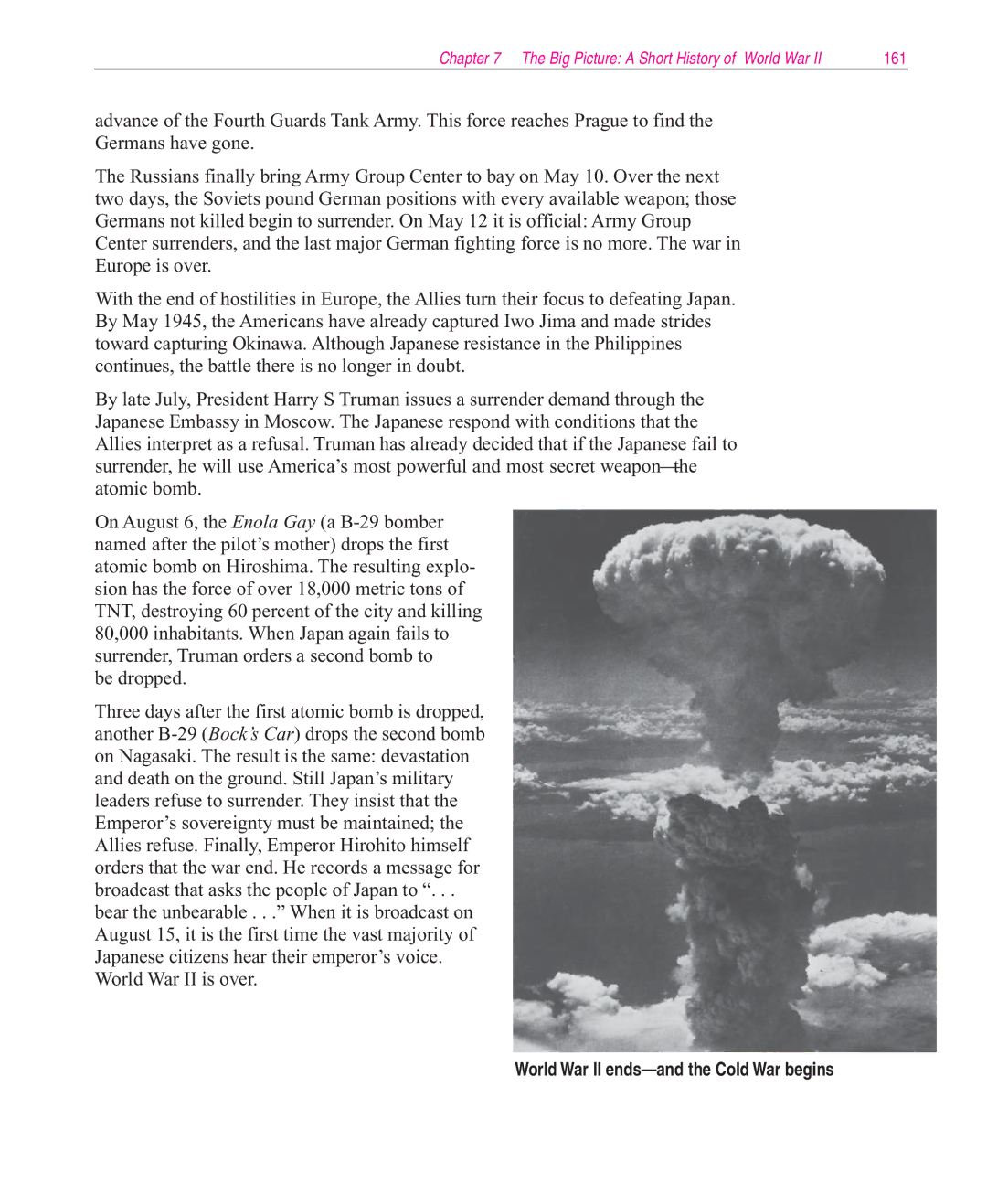
Chapter 7 The Big Picture: A Short History of World War II | 161 |
advance of the Fourth Guards Tank Army. This force reaches Prague to find the Germans have gone.
The Russians finally bring Army Group Center to bay on May 10. Over the next two days, the Soviets pound German positions with every available weapon; those Germans not killed begin to surrender. On May 12 it is official: Army Group Center surrenders, and the last major German fighting force is no more. The war in Europe is over.
With the end of hostilities in Europe, the Allies turn their focus to defeating Japan. By May 1945, the Americans have already captured Iwo Jima and made strides toward capturing Okinawa. Although Japanese resistance in the Philippines continues, the battle there is no longer in doubt.
By late July, President Harry S Truman issues a surrender demand through the Japanese Embassy in Moscow. The Japanese respond with conditions that the Allies interpret as a refusal. Truman has already decided that if the Japanese fail to surrender, he will use America’s most powerful and most secret weapon the atomic bomb.
On August 6, the Enola Gay (a
be dropped.
Three days after the first atomic bomb is dropped, another
bear the unbearable . . .” When it is broadcast on August 15, it is the first time the vast majority of Japanese citizens hear their emperor’s voice.
World War II is over.
